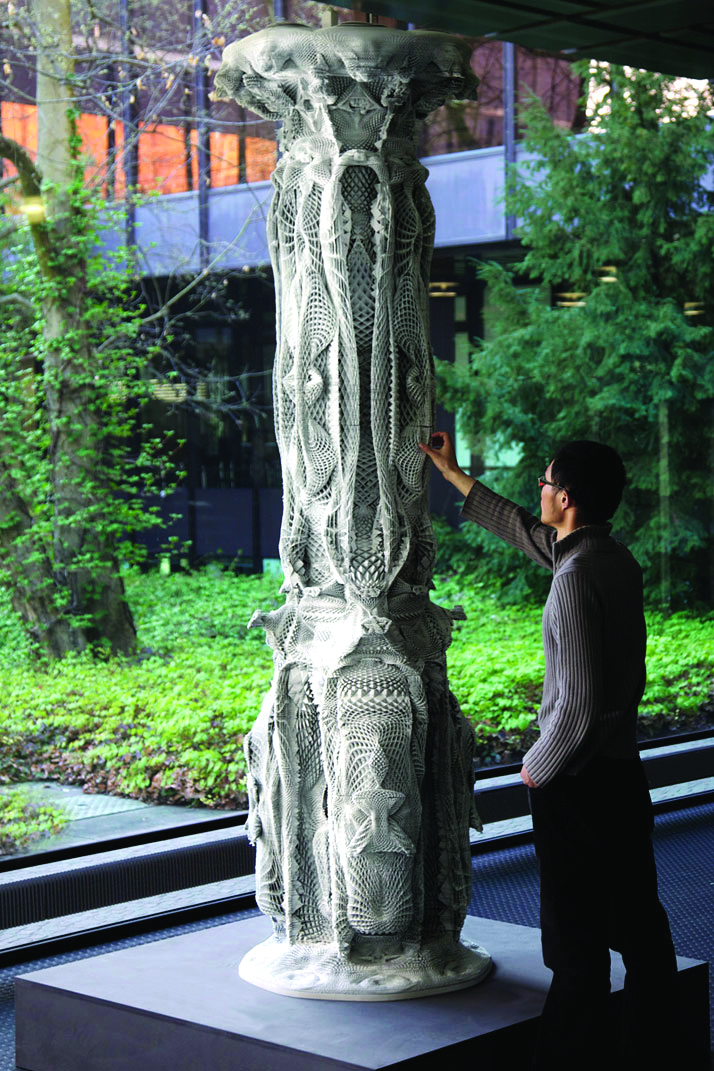Architects are often taught in specific styles that are reflected in their work. But with most of our structures influenced by pre-existing designs, engineers are now asking what would happen if we could create designs completely independent of any references and preconceptions.
Algorithm-based architecture, the use of computer programs to create structures, does just that. It designs buildings without borrowing elements from existing structures in order to represent truly unseen forms.
Nature is arguably the greatest architect of form. Its creations span from tiny hummingbirds in Chile to colossal sequoia trees along the coast of California. All these ‘designs’ are based on a very simple algorithm: cell division. There are two ways that this cell division can occur: either the cells are exact copies of each other, or they divide through asymmetric cell division to form slightly different shapes. This very simple idea allows for an enormous variety of cell forms.
Algorithm-based architecture also works with this simple idea. Architects write a formula, known as an algorithm, and input it into the computer. This formula is used to create a multitude of intricate designs, which are then made a reality through the use of a 3D printer.
Just like the small modifications made to cells through cell division, the algorithm used by architects takes a small cube and makes subtle changes to it, known as folds. These folds result in a change in appearance, just as it would if you were to fold paper. Using a computer instead of physical processes algorithm architects make folds a million times quicker, and in countless variations, resulting in many more designs than were ever possible before.
This detachment from physical processes bestows upon the designer the ability to create shapes and surfaces that were previously inconceivable with traditional methods of design—we can now create surfaces that fold on themselves, or become porous. By simply varying the underlying “rule” of how and where to fold the elemental cube, the designer can create a plethora of such designs.
Although 99.9 per cent of the designs emanating from this process are the geometric equivalent of noise (random distributions), the detailed features that this process generates are unimaginably beautiful, and elegant forms of architecture can result from a long process of trial and error. Furthermore, by analyzing existing structures with the computer, a list of attributes can be generated to aid the final design, such as length of edges, planarity of surfaces, as well as their curvature. Architects can then use these parameters with respect to the rule, allowing them to easily create extraordinary and eye-catching structures.
But we need to be able to construct these shapes in real life, otherwise the whole exercise of creating intricate algorithm-based designs would be restricted to the virtual world. This is where 3D printing steps in. Although there is a trade-off between large-scale printing and speed at the moment, such machines are becoming faster and cheaper. For example, to create a model column, the entire column is sliced up into cross-sections, and then the parameters are fed into a laser cutter. These slices are individually made, and stacked on top of one another to give the final shape. These models consist of thousands of layers each only a few millimeters thick. Almost all of the details and surface intricacies are preserved in the process of transferring the model from the computer screen to the real world.
Through algorithm-based architecture, the role of the architect has been dramatically altered from someone intimately connected to the physical process of creating structures to a master of design, capable of generating rules to portray the structures of his imagination. In the words of Polish-born mathematician Benoit Mandelbrot, “Bottomless wonders spring from simple rules … which are repeated without end,” very aptly verbalise this abstract notion of synthesizing new designs.








